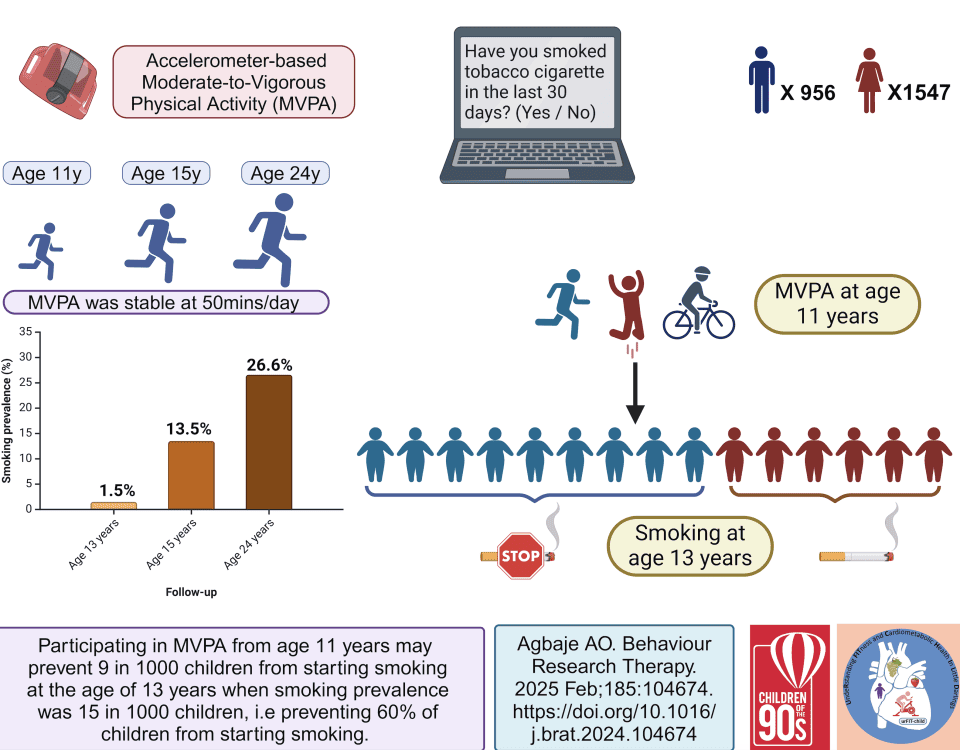
Sitting Time Metrics Added to Global Observatory for Physical Activity (GoPA!) Country Cards
February 24, 2021Effects of Classroom Active Desks on Children and Adolescents’ Physical Activity, Sedentary Behavior, Academic Achievements and Overall Health: A Systematic Review
March 11, 2021Thank you to Dr. Wuyou Sui for providing this post. The blog post describes a publication titled “Relationships between indices of sedentary behavior and hedonic well-being: A scoping review” in the Psychology of Sport and Exercise (available here).
Background
Excessive chronic sedentary behaviour (SB) demonstrates consistent links to poorer physical health and increased risk for numerous chronic diseases (1). Less explored, however, is the relationship between SB and subjective well-being, or an individual’s self-evaluation of their quality of life (2). Understanding individuals’ subjective well-being is important, given it can predict favourable health outcomes in the future (2). Hedonic well-being, a conceptualization of subjective well-being, postulates that optimal well-being is composed of increased positive feelings and minimal negative feelings (i.e., affect), as well as favourable judgements of one’s life (i.e., life satisfaction) (3). Importantly, assessments of hedonic well-being can be, and often are, distinct from traditional markers of health. For example, being diagnosed with type 2 diabetes does not preclude individuals from experiencing positive affect and judging their lives to be satisfactory. Similarly, the absence of any markers of illness or chronic disease does not infer satisfaction with one’s life or the absence of negative affective states. The inconsistency in how SB is measured in the literature (e.g., SB vs. physical inactivity vs. screen time) further complicates potential relationships between hedonic well-being and SB, since the outcomes of hedonic well-being may be sensitive to the context of the SB (e.g., commuting, eating, socializing) (4). As such, our review sought to explore relationships between outcomes of hedonic well-being with indices of SB.
What we did
We conducted a scoping review of the literature, including studies that examined an outcome of hedonic well-being (i.e., affect, life satisfaction, overall hedonic well-being) and an index of SB (i.e., device-measured or self-reported SB, device-measured or self-reported physical inactivity, screen time). Overall, we found 46 articles that met our criteria.
What we found
Results from our review highlight three main findings. First, greater levels of any measure of SB were weakly correlated with poorer hedonic well-being. These differences were most apparent among studies that distinguished very sedentary or inactive from relatively non-sedentary or active groups. Our second main finding relates to the context of the SB performed. Specifically, different contexts of SB demonstrated varying associations with hedonic well-being. For example, our results revealed that increased screen time (e.g., TV, using computers) was typically associated with poorer hedonic well-being; however, time spent sitting while socializing, or playing an instrument, or reading demonstrated positive associations with outcomes of hedonic well-being. These findings highlight the importance in considering the context or domain of a SB as it relates to hedonic well-being. Our third finding concerns between-subject (i.e., overall) and within-subject (i.e., self-compared) levels of SB, in relation to hedonic well-being. Studies that examined within-subject SB found relatively stronger associations than between-subject associations. In other words, how much an individual sits relative to how much they usually sit may have a greater impact on their hedonic well-being than the total amount of sitting they do.
What this means
This review is the first to collate the literature surrounding relationships between hedonic well-being and indices of SB. Generally, our results align with traditional SB and health research trends, in that more SB or inactivity is associated with poorer outcomes of hedonic well-being. However, the domain-specific findings directly contrast traditional SB research, which typically demonstrates consistent detrimental associations between SB and health outcomes. As such, consideration for where SB is being reduced from in addition to how much to reduce by, should be considered in future SB research, so as not to negatively impact well-being at the cost of reducing SB. Further, the observed role of within-subject changes in SB infer that any individual may benefit from being less sedentary or inactive, regardless of their objective SB or activity level. However, research designs examining within-subject changes in SB were limited and should be the focus of future work exploring SB and hedonic well-being.
COVID-19 continues to consign individuals globally to isolated and sedentary environments by way of stay-at-home orders, closures of recreational facilities, and heightened health-related anxieties. Thus, the role of reducing SB and staying active may not just combat the physical consequences of the pandemic – but bolster the subjective well-being of individuals as well.
References
- De Rezende LFM, Lopes MR, Rey-Loṕez JP, Matsudo VKR, Luiz ODC. Sedentary behavior and health outcomes: An overview of systematic reviews. PLoS One. 2014;9(8).
- Diener E, Pressman SD, Hunter J, Delgadillo-Chase D. If, Why, and When Subjective Well-Being Influences Health, and Future Needed Research. Appl Psychol Heal Well-Being. 2017;9(2):133–67.
- Diener E. Subjective well-being: The science of happiness and a proposal for a national index. Am Psychol. 2000 Jan;55(1):34–43.
- O’Neill C, Dogra S. Different Types of Sedentary Activities and Their Association With Perceived Health and Wellness Among Middle-Aged and Older Adults: A Cross-Sectional Analysis. Am J Heal Promot. 2016;30(5):314–22.
About the author

Dr. Wuyou Sui received his PhD in Kinesiology at Western University in 2020, under the supervision of Dr. Harry Prapavessis. Dr. Sui’s expertise is in the broad areas of health behaviour change, digital health, and mental health and well-being. Dr. Sui is currently pursuing a post-doctoral fellowship with Dr. Ryan Rhodes in the Behavioural Medicine Lab at the University of Victoria. He also likes dogs.




